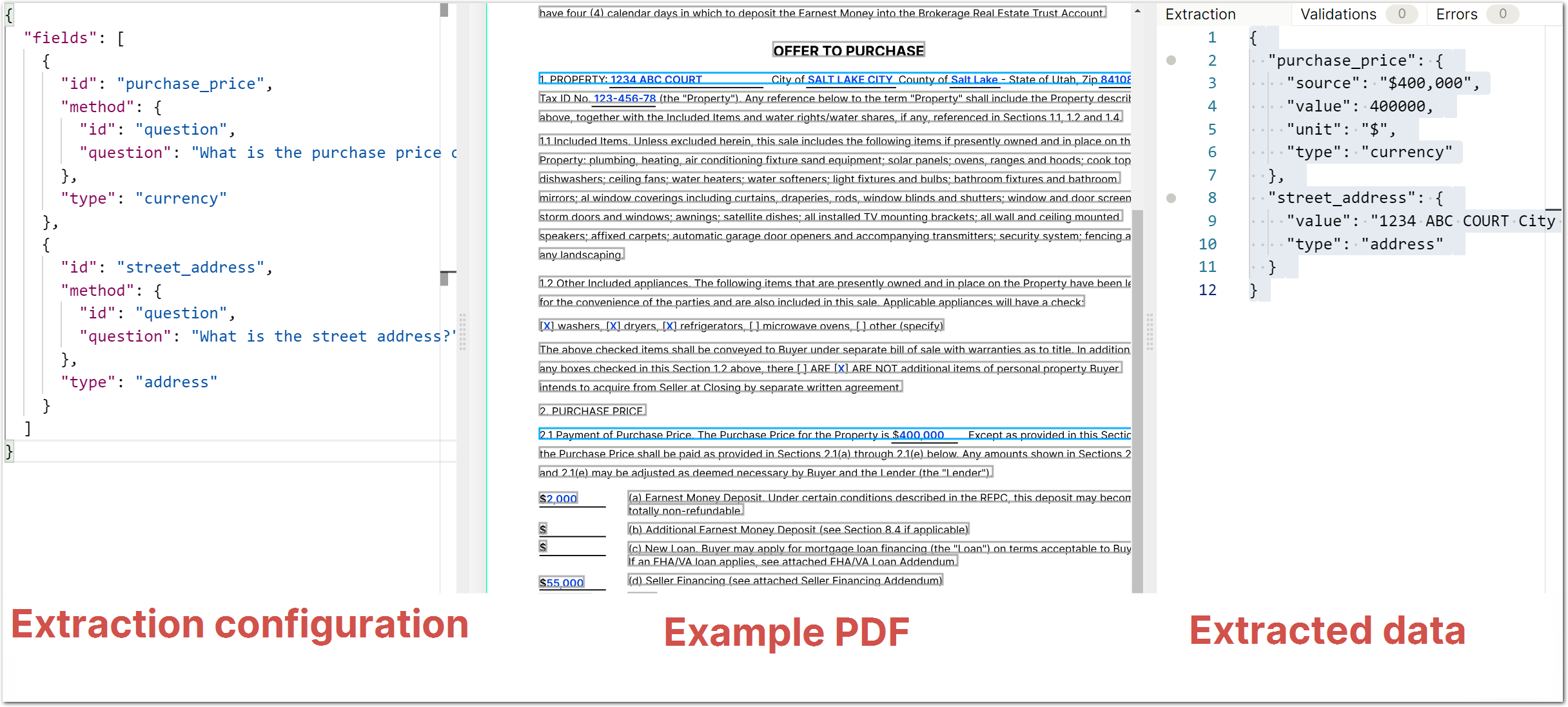
Security News
The Push to Ban Ransom Payments Is Gaining Momentum
Ransomware costs victims an estimated $30 billion per year and has gotten so out of control that global support for banning payments is gaining momentum.
sensible-api
Advanced tools
Javascript SDK for Sensible, the developer-first platform for extracting structured data from documents so that you can build document-automation features into your SaaS products
Readme
The open-source Sensible Node SDK offers convenient access to the Sensible API. Use the Sensible Node SDK to:
For configuration options, see Node SDK reference.
In an environment in which you've installed Node, create a directory for a test project, open a command prompt in the directory, and install the dependencies:
npm install sensible-api
To import Sensible and other dependencies to your project, create an index.mjs file in your test project, and add the following lines to the file:
import { SensibleSDK } from "sensible-api";
Get an account at sensible.so if you don't have one already.
To initialize the dependency, paste the following code into your index.mjs file and replace YOUR_API_KEY with your API key:
const sensible = new SensibleSDK(YOUR_API_KEY);
Note In production ensure you secure your API key, for example as a GitHub secret.
To extract data from a sample document at a URL:
index.mjs file:const request = await sensible.extract({
url: "https://github.com/sensible-hq/sensible-docs/raw/main/readme-sync/assets/v0/pdfs/contract.pdf",
documentType: "sensible_instruct_basics",
environment: "development" // see Node SDK reference for full list of configuration options
});
const results = await sensible.waitFor(request); // waitFor is optional if you configure a webhook
console.log(results); // see Node SDK reference to convert results from JSON to Excel
index.mjs file, run the code with the following command:node index.mjs
The code extracts data from an example document (contract.pdf) using an example document type (sensible_instruct_basics) and an example extraction configuration.
To extract from a local file:
index.mjs file:| Example document | Download link |
|---|
index.mjs file, then run it according to the steps in the previous option:const request = await sensible.extract({
path: ("./contract.pdf"),
documentType: "sensible_instruct_basics",
});
const results = await sensible.waitFor(request); // waitFor is optional if you configure a webhook
console.log(results); // see Node SDK reference to convert results from JSON to Excel
This code uploads your local file to a Sensible-hosted URL and extracts data from an example document (contract.pdf) using an example document type (sensible_instruct_basics) and an example extraction configuration.
The following excerpt of the results shows the extracted document text in the parsed_document object:
{
"purchase_price": {
"source": "$400,000",
"value": 400000,
"unit": "$",
"type": "currency"
},
"street_address": {
"value": "1234 ABC COURT City of SALT LAKE CITY County of Salt Lake -\nState of Utah, Zip 84108",
"type": "address"
}
}
For more information about the response body schema, see Extract data from a document and expand the 200 responses in the middle pane and the right pane to see the model and an example, respectively.
Navigate to https://app.sensible.so/editor/instruct/?d=sensible_instruct_basics&c=contract&g=contract to see how the extraction you just ran works in the Sensible app. You can add more fields to the extraction configuration to extract more data:

See the following code for a complete example of how to use the SDK for document extraction in your own app.
import { SensibleSDK } from "sensible-api"
const sensible = new SensibleSDK(YOUR_API_KEY);
const request = await sensible.extract({
path: ("./contract.pdf"),
documentType: "sensible_instruct_basics",
environment: "development" // see Node SDK reference for configuration options
});
const results = await sensible.waitFor(request); // waitFor is optional if you configure a webhook
console.log(results); // see Node SDK reference to convert results from JSON to Excel
You can classify a document by its similarity to each document type you define in your Sensible account. For example, if you define a bank statements type and a tax_forms type in your account, you can classify 1040 forms, 1099 forms, Bank of America statements, Chase statements, and other documents, into those two types.
See the following code example for classifying a document.
const request = await sensible.classify({path: "./boa_sample.pdf"});
const results = await sensible.waitFor(request);
To classify an example document, take the following steps:
Follow the steps in Out-of-the-box extractions to add support for bank statements to your account.
Follow the steps in the preceding sections to install and initialize the SDK.
Download the following example file and save it in the same directory as your index.mjs file:
| Example document | Download link |
|---|
Paste the preceding code into your index.mjs file. Ensure you replacedYOUR_API_KEY with your [API key]((https://app.sensible.so/account/) and YOUR_DOCUMENT.pdf with boa_sample.pdf. See the following code example to check your code completeness.
In a command prompt in the same directory as your index.mjs file, run the code with the following command:
node index.mjs
The following excerpt of the results shows the extracted document text in the TO_DO object:
{
"document_type": {
"id": "22666f4f-b8d6-4cb5-ad52-d00996989729",
"name": "bank_statements",
"score": 0.8922476745112722
},
"reference_documents": [
{
"id": "c82ac28e-7725-4e42-b77c-e74551684caa",
"name": "boa_sample",
"score": 0.9999980536061833
},
{
"id": "f80424a0-58f8-40e7-814a-eb49b199221e",
"name": "wells_fargo_checking_sample",
"score": 0.8946129923339182
},
{
"id": "cf17daf8-7e8b-4b44-bc4b-7cdd6518d963",
"name": "chase_consolidated_balance_summary_sample",
"score": 0.8677569417649393
}
]
}
Here's a complete example of how to use the SDK for document classification in your own app:
import { SensibleSDK } from "sensible-api"
const sensible = new SensibleSDK(YOUR_API_KEY);
const request = await sensible.classify({path:"./boa_sample.pdf"});
const results = await sensible.waitFor(request);
console.log(results);
FAQs
Javascript SDK for Sensible, the developer-first platform for extracting structured data from documents so that you can build document-automation features into your SaaS products
We found that sensible-api demonstrated a healthy version release cadence and project activity because the last version was released less than a year ago. It has 1 open source maintainer collaborating on the project.
Did you know?

Socket for GitHub automatically highlights issues in each pull request and monitors the health of all your open source dependencies. Discover the contents of your packages and block harmful activity before you install or update your dependencies.

Security News
Ransomware costs victims an estimated $30 billion per year and has gotten so out of control that global support for banning payments is gaining momentum.

Application Security
New SEC disclosure rules aim to enforce timely cyber incident reporting, but fear of job loss and inadequate resources lead to significant underreporting.

Security News
The Python Software Foundation has secured a 5-year sponsorship from Fastly that supports PSF's activities and events, most notably the security and reliability of the Python Package Index (PyPI).